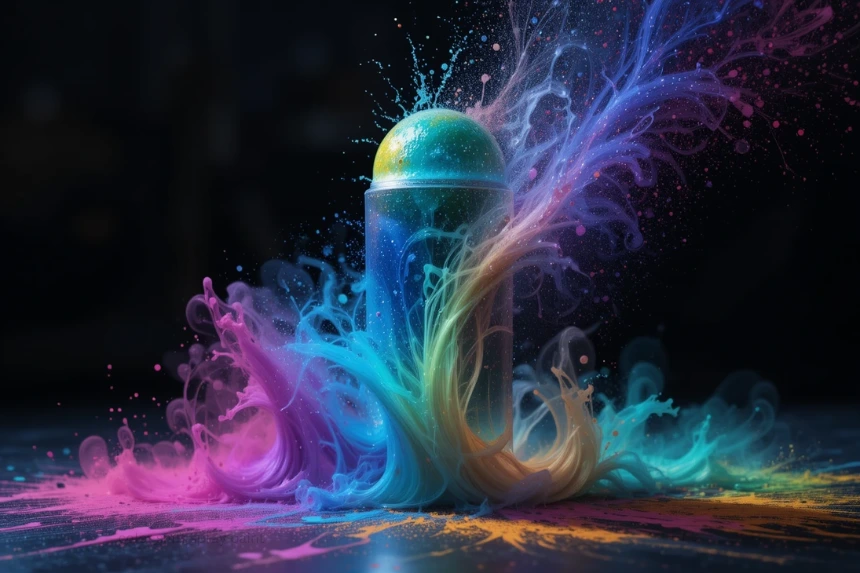In recent years, the automotive, crafting, and DIY communities have been captivated by the mesmerizing effects of color shift spray paint. Known for its dynamic and captivating appearance, this type of spray paint creates a color-changing effect that shifts hue depending on the angle of view and lighting conditions. If you’re curious about how to achieve stunning visual transitions on various surfaces, understanding the ins and outs of color shift spray paint is essential. This article explores what it is, how it works, its applications, and tips for using it effectively.
What Is Color Shift Spray Paint?
Color shift spray paint is a special type of automotive or craft spray paint designed to produce a color-changing effect. Unlike traditional paints, which maintain a uniform appearance, color shift paints contain innovative pigments, often called “interference” or “chameleon” pigments. These pigments have the unique ability to reflect light at different wavelengths, creating vivid shifts in color as you change your viewing angle or lighting.
This type of spray paint is highly versatile and popular for customizing cars, motorcycles, helmets, bike frames, artistic projects, and even household decor. Its eye-catching effects make it a favorite among artists, car enthusiasts, and creative hobbyists alike.
How Does Color Shift Spray Paint Work?
The magic behind color shift spray paint lies in its special pigments that interfere with light. These pigments are made up of several thin-film layers that let some light wavelengths through while reflecting others. As the angle of viewing or lighting changes, the reflected wavelengths shift, resulting in a seamless color transition.
For example, a surface sprayed with color shift paint might appear blue from one angle, then transition to purple or green from another. This optical illusion creates a dynamic visual experience, making your projects stand out with a high-impact finish.
The complexity of this effect depends on the kind of surface painted, the application’s thickness, and the caliber of the pigments used. Professional-grade products typically deliver more dramatic and durable shifts, while lower-quality options might produce subtler effects.
Popular Applications of Color Shift Spray Paint
Color shift spray paint has gained popularity across various fields.Some of the most common usage are as follows:
Automotive Customization: Car enthusiasts use it to give their vehicles a unique look that changes in different light conditions. It’s perfect for accents, entire paint jobs, or detailing small elements for an eye-catching effect.
Motorcycle and Bicycle Designs: Riders love customizing their bikes with these paints for a personalized, attention-grabbing appearance.
Art and Craft Projects: Artists incorporate color shift spray paints into murals, sculptures, and small craft projects to add a magical, shimmering quality.
Home Decor: Some creative homeowners use this paint on furniture, decorative panels, or accessories for a modern, futuristic vibe.
Sports Equipment: For a unique appearance, color shift spray paint is frequently used to paint helmets, skateboards, and other equipment surfaces.
It’s important to note, however, that for best results and durability, proper surface preparation and application techniques are essential.
Tips for Using Color Shift Spray Paint Effectively
To achieve the best possible outcome with color shift spray paint, consider the following tips:
Surface Preparation: Clean and sand the surface thoroughly to ensure proper adhesion. Remove any grease, dirt, or rust.
Choose the Right Primer: Use a compatible primer designed for the material to enhance the paint’s adhesion and longevity.
Apply in Optimal Conditions: Spray in a dust-free environment, ideally with temperatures between 65-85°F (18-29°C) and proper humidity levels.
Use Multiple Thin Coats: Apply multiple light coats rather than a single thick layer to create a smooth, even finish and avoid runs.
Follow the Manufacturer’s Instructions: Read all instructions carefully, especially regarding drying times and curing processes.
Clear Coat for Durability: Sealing your project with a clear, high-quality topcoat protects the color-shifting effect from scratches and UV damage.
Practice on Scrap Material: If you’re new to color shift paints, test on scrap pieces first to understand the color transition and application techniques.
Choosing the Right Color Shift Spray Paint
There are differences among color shift spray paints. Take into account the following elements while choosing a product:
Type of Pigments: Higher-quality paints contain advanced interference pigments that produce more dramatic shifts.
Color Range: Some paints shift between specific colors (e.g., blue to purple), while others offer a broad spectrum.
Durability: Check for resistance to elements such as UV rays, chemicals, and scratches—especially if used on vehicles or outdoor items.
Application Compatibility: Ensure the paint is suitable for your surface material, whether metal, plastic, or wood.
Brand Reputation: Opt for reputable brands known for consistent quality and color-shift effects.
Final Thoughts: Elevate Your Projects with Color Shift Spray Paint
Incorporating color shift spray paint into your projects can elevate ordinary items into extraordinary works of art. Its mesmerizing hue transitions captivate viewers and showcase your creativity and attention to detail. Whether enhancing a custom vehicle, creating unique home decor, or exploring artistic expression, understanding the science, application tips, and best practices ensures stunning results.
If you’re ready to experiment with this captivating paint type, start with small projects to familiarize yourself with its properties, then gradually move on to larger applications. With patience and practice, you’ll be able to master the dynamic beauty of color shift spray paint and produce eye-catching, professional-looking finishes.



